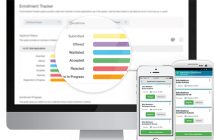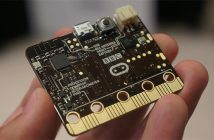
The results of the first national telephone survey of lower income parents on issues related to internet connectivity have been published.
The aim of the survey was to investigate the varying degrees of Internet and digital inclusion of low-income families at a national level. The focus of the research was to shed light on this specific part of U.S. population, because according to the authors, technology use in low-income homes can be be lost in the celebration of digital progress.
Victoria Rideout, MA and a president of VJR Consulting and Vikki Katz, Ph.D., Associate Professor in the School of Communication and Information at Rutgers University, conducted the research. Katz and Rideout interviewed 1,191 families with children aged 6-13. All parents declared household income below the national average for families with kids.
The study showed that a majority of lower- and moderate-income families have some type of Internet connection. However, most of them are under-connected, with mobile-only access or lacking substantial connectivity.
94% of the respondents confirmed they had either a computer or a smart mobile device connected to the Internet with a data plan. 23% of families whose income is below the national income level and 33% of those with income below the national poverty level said they had only a mobile Internet connection. Many of the respondents complained they often experienced interruptions to their Internet service.
52% of the families having home Internet access stated the connection was too slow. 26% added that too many family members shared the same computer. 24% had their Internet connection cut off in the past year due to unpaid bills.
According to the survey, families headed by Hispanic immigrants are less connected than other low- and moderate-income families. 10% of the immigrants of Hispanic origin have no Internet connectivity. 41% of Hispanic households said they only had mobile Internet. 20% of Hispanic immigrants confirmed they do not use the Internet at all.
The reason some families do not have home computers or Internet access is because they are too expensive. The discounted Internet programs are reaching very few of people in need.
40% of lower income families who do not own computers or have Internet access cite that they can’t afford it, the survey says. Only 13% of them stated they did not in fact needed a computer/Internet connection.
Lower- and moderate-income families confirmed they used the Internet on a daily basis for a broad range of activities such as looking for information online (95%), staying in touch with family and friends (83%), and e-banking (67%). On the other hand, the mobile-only families used the Internet for only a few purposes like online shopping (36%), e-banking (49%), job hunting (42%).
The research also showed that children from lower income families used the Internet for educational activities (81%) while their peers without home Internet access were less likely (34%).
Although parents are in general positive about the use of digital technologies, many of them also have some concerns. 89% of the respondents said the electronic devices help kids gain new skills and knowledge. However, 74% of the parents were worried about their children’s exposure to inappropriate online content. Online bullying (51%) and distractions from their core activities (63%) were also among the main concerns parents had about the Internet and digital devices.
The researchers commented that understanding families’ experiences and approaches towards the digital technology and the Internet was critical so that national and local authorities could address inequalities in Internet connectivity and device ownership.




